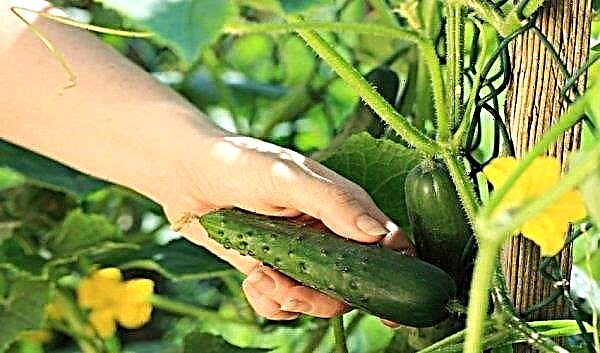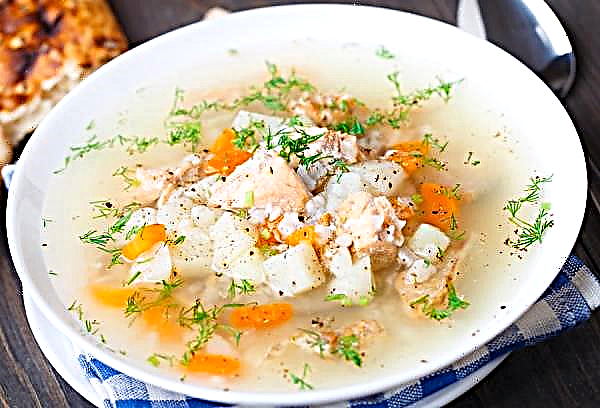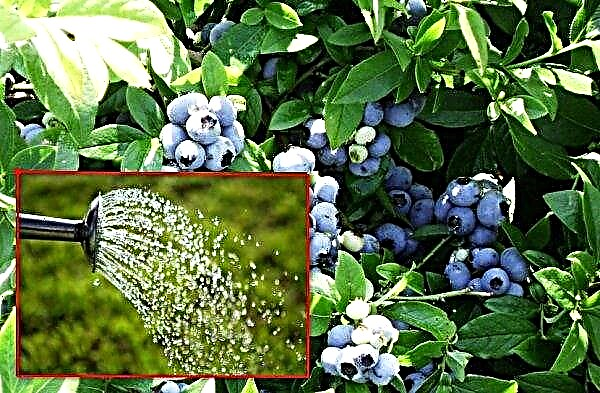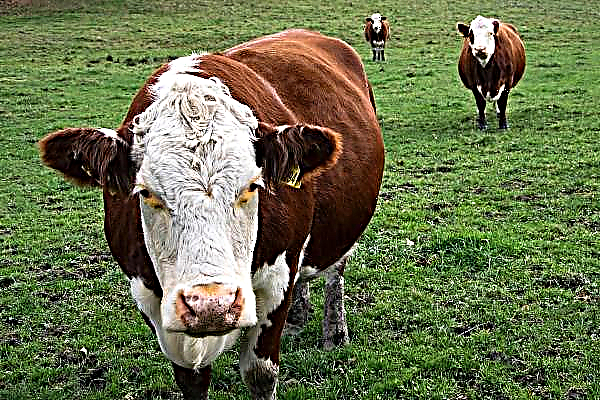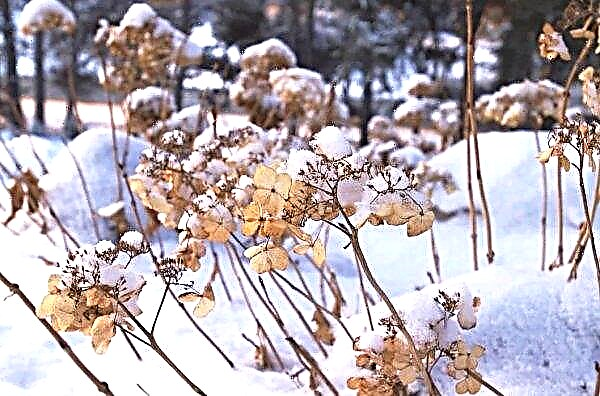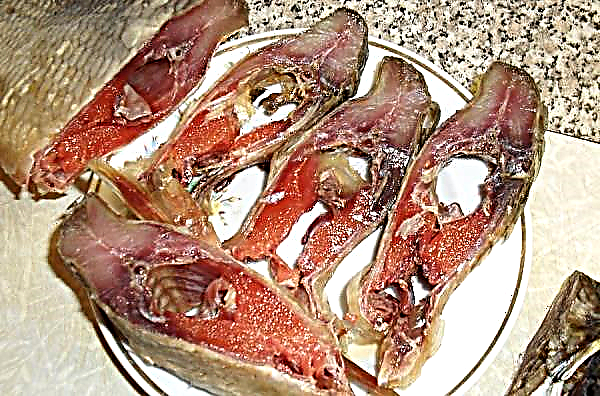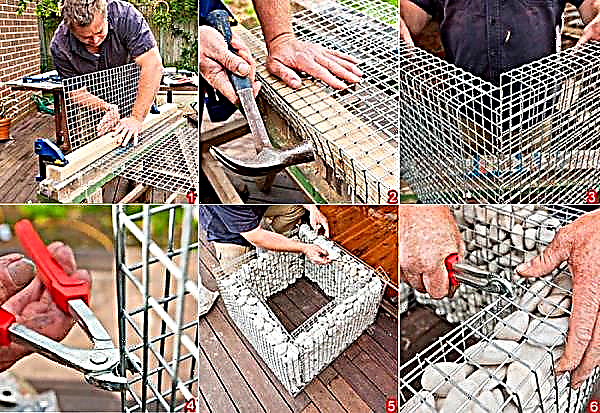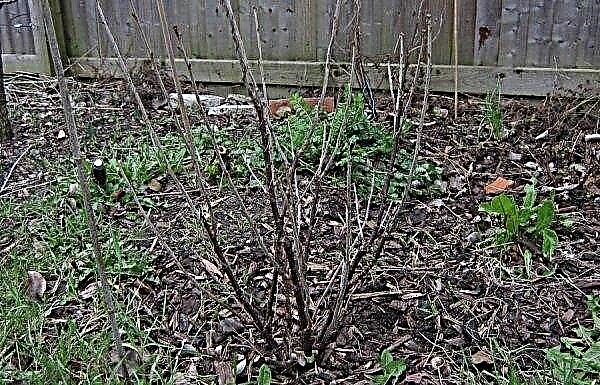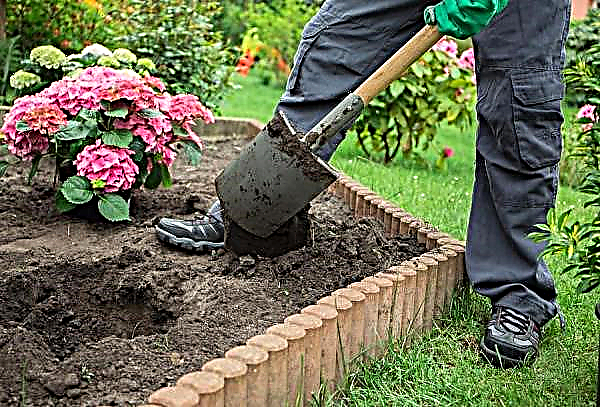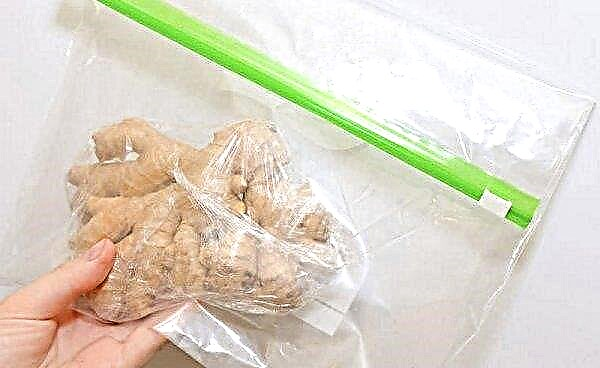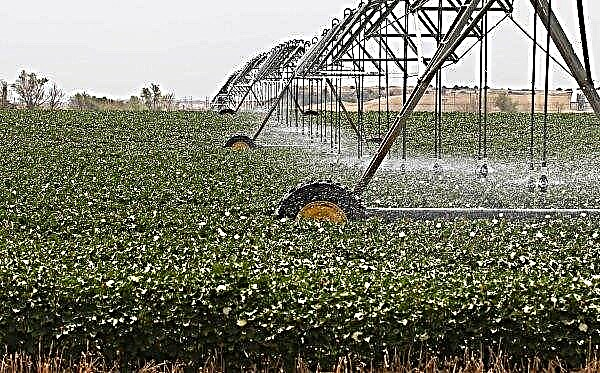String beans are popular in European dishes (especially Belgian) and in many Asian countries. The nutritional value and benefits of this product have also attracted our gardeners. We learn what asparagus beans are and how they are useful, how to plant, grow and harvest them.
Description of the plant, its benefits
Green beans are also called asparagus. This, in fact, is a type of ordinary bean in which unripe pods are eaten.
Today there are three types of green beans:
The pods are narrow, long, they can have, depending on the variety, green, yellow, reddish and purple hues. 100 g of pods contain 45 kcal. They include proteins and carbohydrates that satisfy hunger. This product, even after boiling, contains a lot of vitamin C, which helps increase immunity, as well as B vitamins, among which there is most of all folic acid (B9), which is necessary for the normal development of the fetus in the womb and reduces the risk of cardiovascular disease.Potassium, magnesium and manganese are among the minerals that the pods are rich in. There is also calcium, phosphorus, iron, copper, selenium, zinc. Asparagus pods are recommended to be included in the diet of pregnant women, children, and diabetics.
Did you know? Beans came to us from America in the 16th century after its discovery by Columbus along with other popular vegetables. At first it was grown for beauty, then beans were eaten, and somehow, not waiting for ripening, they began to eat unripe pods.
Bean planting
Before planting green beans, you need to choose the right place and time, process the seed, prepare the beds.
How to choose a place to grow green beans
The place should be chosen sunny. Curly varieties must be planted in places where there are supports or they can be installed where there are no strong winds. It is optimal to plant this crop after cucumbers, solanaceous (potatoes, eggplant, tomato), carrots, onions and other root crops. It is not recommended to grow asparagus beans in the same place for several consecutive years and after sunflowers, other legumes and some perennial herbs (clover). Often in the garden bushes of such beans are planted in the rows of potatoes and cabbage - they get along well with each other. This technique of planting seals saves space in small areas. Clayy, acidic or waterlogged soils with a close occurrence of groundwater are not suitable for this culture.
Often in the garden bushes of such beans are planted in the rows of potatoes and cabbage - they get along well with each other. This technique of planting seals saves space in small areas. Clayy, acidic or waterlogged soils with a close occurrence of groundwater are not suitable for this culture.
When to plant green beans
Planting seeds in the open ground is carried out when the ground stably warms up to + 10 ° C at a depth of 6 cm. It is best if the air temperature reaches + 20 ° C. This usually happens in mid-May or early June. If there is a risk of return frosts or a drop in temperature below the permissible limit of the bed, it should be protected with special agrofibre or plastic film. It will not hurt to get acquainted with the weather forecast in the growing region before landing.
Important! It is not recommended to apply nitrogen-containing fertilizers under beans - this plant of the legume family itself perfectly produces nitrogen and enriches the soil with it. Excess of this element reduces crop yield.
How to process beans before sowing
Before sowing, it is recommended to inspect the seed and discard damaged or affected fruits. Shortly before sowing, the seeds should be decontaminated. To do this, you can soak them for 30 minutes in a weak solution of potassium permanganate or dilute 1 g of boric acid in 5 l and lower the seeds there for 5 minutes. Then they should be washed with water. Further, the seeds are advised to soak in clean water at room temperature for 12 hours. For earlier seedlings, the fruits can be sprouted. For this, the seed material is wrapped in a damp rag for 5-6 days and placed in a warm place (+ 20 ... + 30 ° C). When the sprouts appear, they are carefully planted in prepared beds to prevent damage.
Further, the seeds are advised to soak in clean water at room temperature for 12 hours. For earlier seedlings, the fruits can be sprouted. For this, the seed material is wrapped in a damp rag for 5-6 days and placed in a warm place (+ 20 ... + 30 ° C). When the sprouts appear, they are carefully planted in prepared beds to prevent damage.
How to cook a bed of beans
It is best to start preparing a site for planting this crop since the fall. Weed is removed from it and dug up, introducing the following fertilizers for each square meter - 4 kg of humus, 1 tbsp. l saltpeter, 1 tbsp. potassium chloride, 1 tbsp. superphosphate. Beans love nutritious, well-permeable soils. If the soil is poorly drained, then sand (5 kg / 1 m²) is added to it.
Did you know? Ancient Indians usually planted 3 crops together - corn, beans and pumpkin. They made half-meter holes, each of which grew 3 corn, 2 curly beans and 2 pumpkins. Such co-cultivation did not deplete the land and gave excellent yields, which is still used today.
Sowing seeds
Seeds of string beans are planted to a depth of 6 cm. On dense soils they are placed closer to the surface. Sprouted fruits are carefully planted to a depth of 2 cm.
Landing pattern depends on the variety:
- bush varieties are planted with a distance between plants of 15–20 cm and a gap between rows of 35–40 cm;
- curly varieties are usually sown with a distance of 20-30 cm.
Video: sowing bean seeds in open ground
How to make a support for beans
For climbing varieties, it will be necessary to make a support. Usually they make trellises with a height of 1.5 m and pull a rope or wire between them. Then, the beans, as they grow, are sent to the side of the supports, and she herself entwines the stretched rope with a mustache. Sometimes this crop is planted near a mesh netting, but in this case, when the beds are cleaned in autumn, the stems that are fertilized will be difficult to remove from the cells. Alternatively, a winding culture can be planted in a nesting way and make a “hut”. In this case, the seeds are planted in a circle with a diameter of 1 m, and later they put a structure of supports, similar to the base for a hut. There is another option for the support of climbing varieties - to grow them next to corn, as the natives of South and Central America did in ancient times. Strong corn stalks are an excellent support for this plant. With this method, 2 grains of corn and 2 beans are buried in each well. The distance between the holes is up to 30–40 cm, and the row spacing is 0.7 m.
In this case, the seeds are planted in a circle with a diameter of 1 m, and later they put a structure of supports, similar to the base for a hut. There is another option for the support of climbing varieties - to grow them next to corn, as the natives of South and Central America did in ancient times. Strong corn stalks are an excellent support for this plant. With this method, 2 grains of corn and 2 beans are buried in each well. The distance between the holes is up to 30–40 cm, and the row spacing is 0.7 m.
Seedlings and care
When the beans sprout and reach about 10 cm in height, it should be spudded to strengthen the plant and increase productivity. Winding varieties that have reached 2 m are pinched top to stop growth and activate the appearance of more ovaries. Weeds are weeded out as necessary. The soil should be constantly loosened, and you can mulch (for example, straw).
Fertilizers
It is best to feed with organic matter (manure) or mineral fertilizers (nitroammophoska or superphosphate with potassium salt). Manure is diluted with water in a proportion of 1:10 or simply scattered on top of the mulch in the bushes.
From mineral fertilizers, it is enough to make only 3 top dressings:
- during the appearance of the second pair of leaves;
- during flowering;
- when forming pods.

Watering
After sowing, the beds are watered often - daily or every other day. When the seedlings appear and let out the second pair of leaves, the number of irrigations reduces and water the soil as it dries. Watering depends on the weather and in the heat is carried out more often. It is usually sufficient to water once every 3–7 days.
Pest and Disease Control
For planting, you should take high-quality and disinfected planting material in order to avoid such diseases of beans as powdery mildew, white rot, rust, bacteriosis and ascochitosis. Their excellent prevention and treatment will be the use of copper-containing preparations (1% Bordeaux liquid). Among pests, sprout flies, gourds and aphids are most commonly found.
Sprout fly represents a gray fly up to 0.5 cm in size with dark stripes on the back. Her larvae appearing from eggs laid in the soil infect planted plants and prevent germination. This situation appears if fresh manure or unripe compost has been introduced into the ground. A good prevention of these insect pests is the autumn digging of the soil and the use of only rotted organics. Fresh manure is permissible only in the winter. Against melon aphids use "Karbofos" or alternative methods (spraying with infusion of garlic or onion husks). From slugs, plants are sprinkled with ash, and the soil is mulched with nettles - they do not like this plant. You can make a trap for them - pour dark beer into a can and dig it into the ground. Slugs crawl on an attractive smell for them and drown. Prevention of the appearance of many pests is the prevention of the appearance of weeds.
Against melon aphids use "Karbofos" or alternative methods (spraying with infusion of garlic or onion husks). From slugs, plants are sprinkled with ash, and the soil is mulched with nettles - they do not like this plant. You can make a trap for them - pour dark beer into a can and dig it into the ground. Slugs crawl on an attractive smell for them and drown. Prevention of the appearance of many pests is the prevention of the appearance of weeds.
Harvesting String Beans
The time for collecting the pods largely depends on the plant variety (early, mid-ripening, late). Typically, string beans can already be harvested 10 days after flowering, but it is best to wait 14–20 days. Harvest fruits in a state of milk ripeness. In small suburban areas, it is recommended to harvest as they mature. This will contribute to the faster ripening of other fruits, and more fresh beans will be collected more for consumption.
Did you know? In the pods of this bean culture is a substance similar to insulin - arginine. This makes asparagus beans a welcome dish on the diabetic table. Dried cusps are included in the anti-diabetic collection Arfazetin.
Overgrowth of the pods must not be allowed, because after that they become stiff. Such overripe fruits are best left on the seeds. Harvesting is best done in the morning. With one hand, the pods are carefully separated from the stem, and the bush is gently held with the other. For convenience, well-sharpened scissors are sometimes used.
Different types and varieties of green beans
There are more than 50 types of green beans. Between themselves, they differ in processing method, size, shape, ripening time, and taste.
Red beans
The raw fruits of this variety are toxic. They can be eaten only after appropriate heat treatment. Toxic elements are neutralized by high temperatures. These fruits must be boiled for at least 10-15 minutes. Pre beans can be soaked in water. Varieties of red color contain many vitamins and fiber. Regular ingestion of such a product is beneficial for the skin, nervous system, and also enhances immunity, prevents the appearance of tumor formations. When using 100 g of product per day, a person receives the recommended fiber intake. In addition, blood sugar normalizes and toxins are excreted. The product is useful for intestinal infections - it inhibits the activity of pathogens. Red fruits contain enough protein (8 g of protein per 100 g of product) and minerals.
When using 100 g of product per day, a person receives the recommended fiber intake. In addition, blood sugar normalizes and toxins are excreted. The product is useful for intestinal infections - it inhibits the activity of pathogens. Red fruits contain enough protein (8 g of protein per 100 g of product) and minerals.
This product is included in some diets. A variety of these red legumes like Skorospelka ripens relatively quickly. Beans can be harvested after 56-60 days. But the Tomato variety is perfect for conservation.
Important! To prepare different dishes, you need to take young copies, since overripe ones need to be processed longer. In addition, overripe fruits lose their taste, become dry and stiff.
White beans
Thanks to the combination of calcium and magnesium, white beans have a beneficial effect on bone tissue and teeth. If this product is used with vegetables containing vitamin C in its composition, then such a dish will contribute to the absorption of iron, which is sufficient in these fruits. White beans are prepared this way: placed in a pot with cool water and simmer until cooked. Do not stir with a spoon, but you can add 3 tbsp. sunflower oil. Salt is added when the fruit is almost ready.
Green bean
Her varieties are soft and delicate pods. Eat such fruits with the skin. The process of preparing green fruits is not difficult. They are boiled for 5 minutes with the addition of salt. After defrosting, they can be cooked for only 3 minutes. If steamed, it will take 8 minutes. Before cooking, the pods are washed and the harsh parts are cut from both sides. After heat treatment, the pods are moved to a colander and poured with cold water from a tap. Boiled pods can be frozen in the refrigerator, they will not lose their beneficial properties.
Before cooking, the pods are washed and the harsh parts are cut from both sides. After heat treatment, the pods are moved to a colander and poured with cold water from a tap. Boiled pods can be frozen in the refrigerator, they will not lose their beneficial properties.
Important! Caution should be exercised when using beans in certain diseases of the gastrointestinal tract (peptic ulcer, gastritis, colitis), pancreatic diseases, jade, gout.
Purple bean
This variety has pods about 12 cm long. These legumes are also called the "dragon tongue." After heat treatment, the fruits acquire a green color. Purple beans can be consumed without any processing. If the pods have outgrown, then the fruits are peeled before cooking.
Yellow bean
This species got its name because of its yellow color, which looks like wax. It is good for cooking first and second courses, salads. The fruits are steamed, boiled, fried, pickled, stewed. Such a product can be consumed in its raw form - it is very useful.
Varieties of Asparagus Beans
Asparagus beans contain a lot of protein and vitamins. It helps to remove excess fluid from the body.
Did you know? The sweetest variety is considered to be the best type of yellow bean. It yields a high yield after 41–55 days. The length of the pods is about 12–15 cm, and the fruits resemble the shape of a thick yellow cylinder.
Consider the most popular varieties:
- Deer King. It has fruits of a white color. For a warm period, you can get a crop from the site twice. It is a bushy, undersized species.
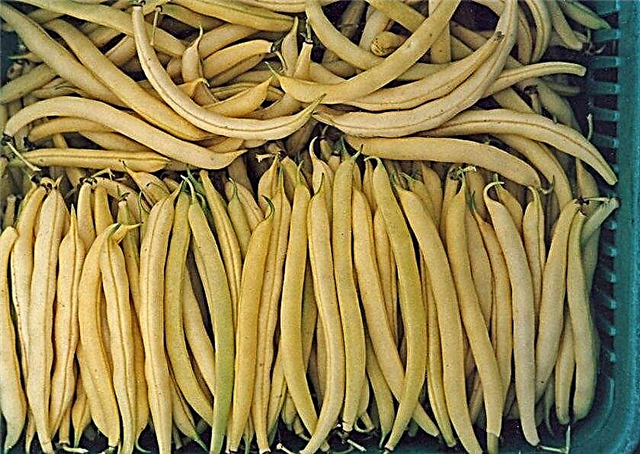
- Fana. Often used for canning. It gives a lot of fruit. It is a low-growing bush variety with high resistance to disease.

- Panther. Mid-late variety with increased productivity. Grows in bushes. It has pods of yellow color with white grains. It can be eaten both raw and after heat treatment.
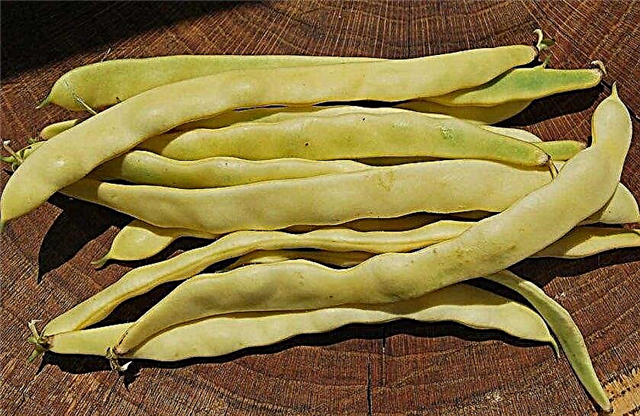
- Royal purple pod. It has many fruits and is highly resistant to disease. Grows in bushes.
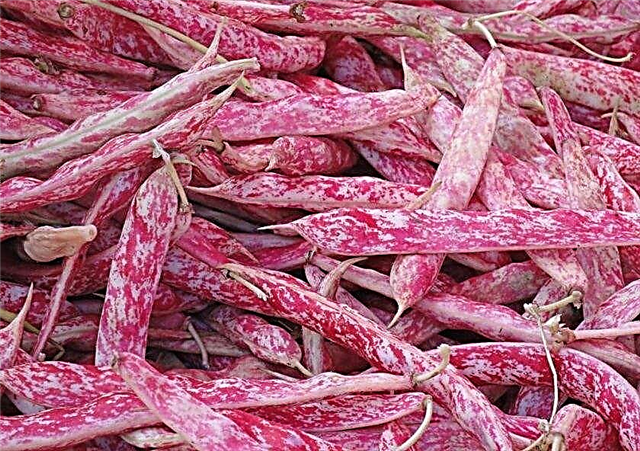
- Caramel. An early variety whose fruits are green pods. The taste is a bit sweet, which is why it got such a name. It is highly resistant to viral diseases.
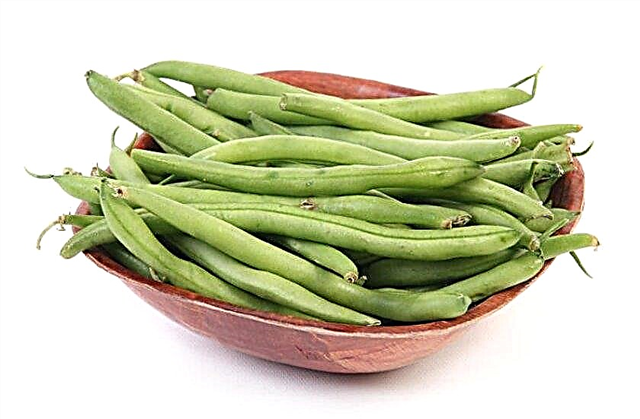
- Indiana. Early ripening grade. On white beans there is a red outline drawing similar to an Indian.

Varieties of Curly Beans
Curly beans, due to its shape, are used in the decoration of the site. This species is not invaded by slugs.
Consider the most common varieties:
- Blau Hilde. It gives a good harvest. In height, it can grow up to 5 m.

- Golden nectar. Early ripe variety, gives a lot of fruit in 2 months. In height, it can grow up to 4 m. Grains have a white color.

- Hell rem. It has a high yield. Grains are painted in a pinkish-lilac color. The fruits have the aroma of mushrooms.
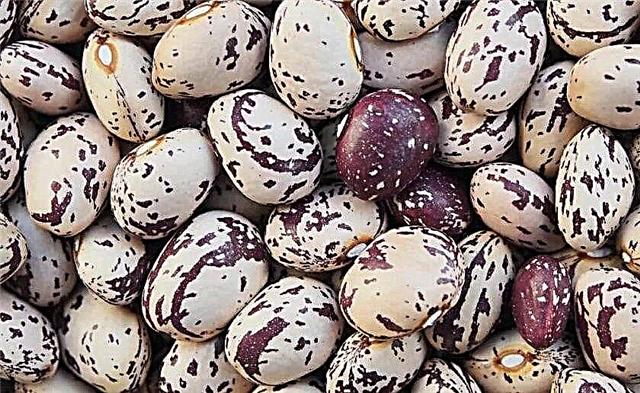
- Akito. It gives a good harvest. The fruits are painted black. The variety is resistant to certain diseases and has a pleasant smell of mushrooms.
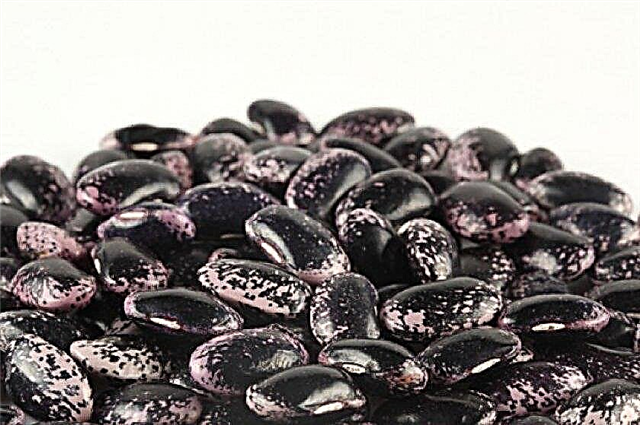
Asparagus beans can enrich the human body with useful substances, and growing it is not particularly troublesome. From it you can cook various vegetable dishes, as well as prepare for the winter - do conservation or freeze.











